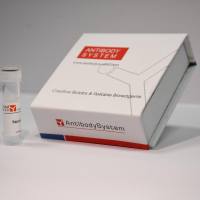Opioid receptors are coupled to a variety of effectors, including G protein-activated inwardly rectifying potassium (GIRK) channels (also known as Kir3), adenylyl cyclases, and voltage-dependent calcium channels (1 ). GIRK channels have been shown to be involved in opioid-induced analgesia (2 ). These channels are activated by G protein-coupled receptors (GPCRs) such as opioid, nociceptin/orphanin FQ, M2 muscarinic, α2 adrenergic, and D2 dopaminergic receptors via the βγ subunits of G proteins (Gβγ) (see Fig. 1 ) (3 –7 ). Activation of GIRK channels induces membrane hyperpolarization of the neurons via efflux of potassium ions, ultimately reducing neural excitability and heart rate (3 ,8 –10 ). GIRK channels are members of a family of inwardly rectifying potassium (IRK) channels which have two transmembrane regions and one pore-forming region (see Fig. 2 ). The cDNAs for four GIRK channel subunits have been cloned from mammalian tissues (11 –13 ). Neuronal GIRK channels in most regions of the central nervous system (CNS) are predominant heteromultimers consisting of GIRK1 and GIRK2 subunits (14 –16 ), whereas atrial GIRK channels are heteromultimers consisting of GIRK1 and GIRK4 subunits (17 ). The GIRK1, GIRK2, and GIRK3 subunits are widely and distinctively expressed in the CNS (14 ,16 ,18 ), suggesting that they are involved in diverse functions of the CNS such as cognition, memory, emotion, and motor coordination. In many neurons, GIRK channels are coexpressed with opioid receptors (6 ).






